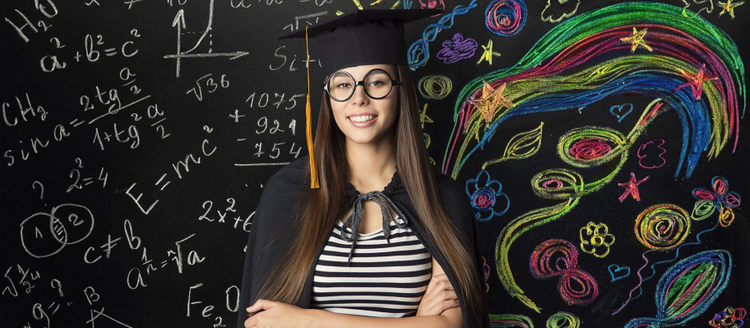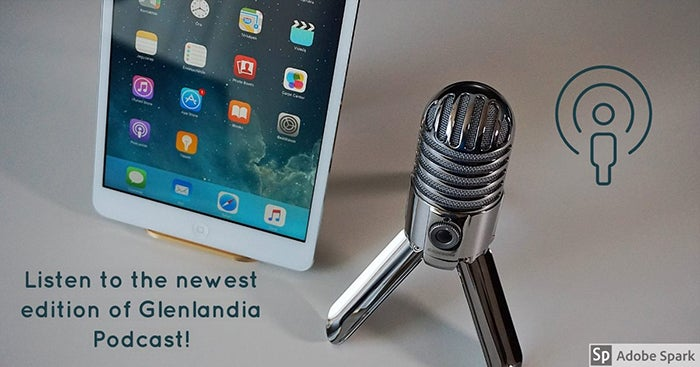Image source: Adobe Stock / inarik.
When you think about the concept of digital creativity, your mind might traditionally go directly to the arts. This association starts at a young age usually as we progress through our own education. Art classes and design classes are the place to explore color, shape, and purpose. This continues into higher education as we traditionally see these creative exploratory courses attached to the Humanities. However, does this association actually help or harm digital creativity in higher education? Shouldn’t students outside of the traditional art space be exposed and encouraged to explore digital creativity? Doesn’t it make sense for all digital natives to have the opportunity to learn and develop these skills, even if the experience is outside their major? These were the questions I was determined to explore during my time at Michigan Technological University.
The student marketing concept
In my marketing communications role at Michigan Tech, I was able to take a simple concept and make it a reality: hire students to form a marketing agency that served departments on campus. Taking my experience from when I was a student designer, I wanted to build a team that would be able to learn, adapt, and tackle the internal projects that were often requested and rejected from on-campus partners. This laundry list would include event posters, pop up campaigns, and larger digital projects like photographing events and establishing marketing videos. The concept seemed very easy, but the execution proved to be a bit of a challenge.
Michigan Tech is an internationally known engineering university. This reputation also means that the majority of students were enrolled in engineering programs. For comparison, during the fall semester in 2018, there were 160 students enrolled in Humanities/Visual Performing Arts programs vs 4,491 students in the College of Engineering (Michigan Technological enrollment by major). That meant that if I wanted to use “traditional creative students” I would have had a pool of 160 students to approach about joining my creative student agency. When I removed the 46 graduate students from the 160 total, I was left with 114 undergraduate student options. With such a small pool, I knew it was time to put one of my questions to the test.
Skills vs. passion
Since I was already going to shake things up by attempting to recruit non-traditional creative degree students, I wanted to really push the status quo and open the door completely. When I posted the positions, I didn’t require any previous experience. Traditionally these types of student jobs require a certain degree or at least previous years of experience, like working on a high school yearbook or newspaper. However this time around, I wanted to recruit anyone with an interest in being creative and had the desire to learn.
My theory involved knowing the fact that I could teach the hard skills of using Adobe Creative Cloud products, the Apple environment, and the basics of marketing and design, so I wanted to find students with the soft skills to make a successful team. Could I find students that had a passion to learn and a desire to explore? Could I find students that wanted to establish a team of not only co-workers but friends on this creative journey? After having informational sessions and going through the hiring process, I hired 5 students with little-to-no experience that had diverse backgrounds and came from all over the University.
Desire to be creative
It didn’t take very long to discover that I had made an excellent choice. I had the right students with a desire to advance their skills and utilize this job as a creative outlet. The proof was when I came in during off hours to find my students learning new skills and trying out the equipment on their own free time. They wanted to be on-campus after hours building their own skills. It wasn’t about the money or the exposure, it was the fact that I had given them a chance to build up skills that they saw value in, outside of the classroom.
https://www.youtube.com/embed/hfxpcYhYTOw
One of the surprises along the way was my photographer and videographer just happened to be roommates going into the next school year. They both had a passion for learning and were never provided professional tools to capture photos or video before. I found out quite quickly that by providing them access to Adobe Creative Cloud and giving them proper training while putting new high end equipment in their hands, the sky was the limit for the quality of work that they were able to produce.
By the time they graduated (after being with me for 3 years) they were both experts in Adobe Lightroom. They could easily trade jobs when it came to covering events for video or photography. They had mastered their camera equipment and were comfortable exploring new techniques. My videographer had mastered Adobe Premiere and was exploring Adobe After Effects because she wanted to “learn more professional ways to present her video content.” What was exciting for me was my videographer was a Psychology major and my photographer was a Medical Lab Science major. Originally they had not taken design or creative courses on campus. Instead, they found other ways to build their skill sets outside of the normal curriculum they were presented. Collectively, my students then had to work with their advisors to make it even possible for them to include humanities courses into their program. However, their creative journey was the proof I needed of my theory – creative passion should be the driving force, not the labeling of a major.

